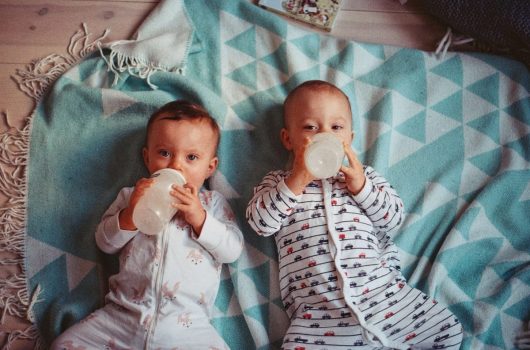If you’re breastfeeding your baby and are going back to work, you might need to start expressing milk and storing it for future use. Expressing and storing can also give you a bit more flexibility to your routine. Breast milk needs to be stored safely for the baby’s safety. Read on for tips on storing breast milk …
First things first:
- Wash your hands thoroughly with soap and water.
- Use a sterilized breast pump.

Use a suitable container
There are two main container possibilities: glass or hard plastic (BPA-free) containers; or specially-designed plastic bags produced for milk collection and storage.
The problem with bags is that they are more likely to tear or leak or even become contaminated. If you do choose to use these bags, be doubly sure to protect the milk by placing it in a hard-plastic container with a tight lid. Never use ordinary household plastic bags for storing breast milk.
Label the container or bag
Every time you store milk, use a waterproof label and waterproof ink to label each container. Write the date on which you expressed the milk. If you send expressed milk to a childcare facility that your baby attends, add your child’s name to the label.
Storing breast milk
Always place containers of breast milk at the back of the refrigerator or freezer to keep it at the coldest temperature possible. If you don’t have access to a fridge or freezer, keep the milk in an insulated cooler as a temporary solution.
How much to store
Never fill a container to the brim as breast milk expands as it freezes.
Fill each container with enough milk for one feeding. Start with something like 2 to 4 ounces and adjust from there. It’s also a good idea to store smaller amounts for unanticipated situations. One to 2 ounces should be enough.

Exercise caution
If you wish to add freshly-expressed breast milk to a frozen container of milk, thoroughly chill it before adding it to prevent the frozen milk from thawing. To cool it, place in the fridge packed in ice packs until cold. Then add to the frozen milk.
How long does expressed breast milk keep for?
How long you can keep breast milk depends on your method of storage. These are the general guidelines we recommend.
If the breast milk is freshly-expressed and at room temperature, it will keep at that temperature for a maximum of six hours. Using or storing within four hours is, however, recommended. Also, if the room in which the milk is kept is particularly warm, four hours is the maximum storage time.
You can keep fresh breast milk in an insulated cooler with ice packs for up to a day.
In the refrigerator, fresh breast milk should be stored at the back and can be kept in there for up to five days. Best practice, however, is to use it or freeze it within three days.
You can freeze breast milk at the back of the freezer for up to 12 months, but six months is optimal.
How should you thaw frozen breast milk?
Always use the oldest milk first. Note, however, that the breast milk you expressed when your baby was a newborn will not contain everything an older baby will need.
To thaw, either defrost the frozen container in the fridge the night before or place the container under running warm water or in a bowl of warm water.
Avoid heating breast milk rapidly on the stove or in a microwave. This could affect the level of antibodies in the milk and might mean that the milk is too hot or too cold in some places.
Throw away any thawed milk that hasn’t been used within 24 hours. Although experts aren’t sure whether or not it is safe to re-freeze previously frozen milk that’s been thawed, it’s better to be safe.
